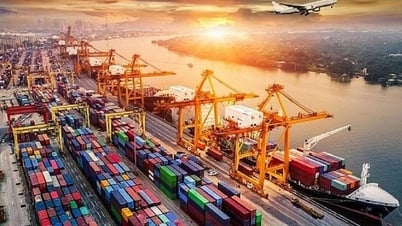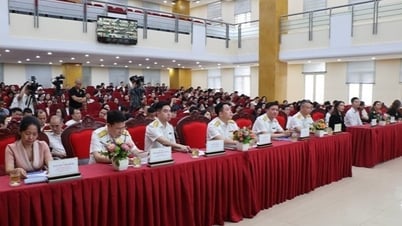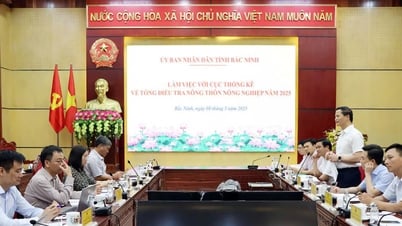According to the Vietnam Association of Seafood Exporters and Producers (VASEP), in the first quarter of 2025, Vietnam's shellfish exports recorded a breakthrough growth, reaching a total turnover of more than 63 million USD, an increase of 109% over the same period last year. In particular, the Chinese and Hong Kong (China) markets rose to the leading position, with a total import value of more than 23 million USD, an increase of nearly 2,000%.
If in the first quarter of 2024, China and Hong Kong (China) only accounted for 4%, then in the first quarter of 2025, this market jumped to 37%. This figure far exceeds other important markets such as the EU with 18 million USD, the US with more than 6 million USD.
According to VASEP, in the context of the EU - a traditional market that is losing its proportion due to competition and stricter regulations, China has emerged as a strategic market. In addition to its large consumption scale, this market is also more flexible in import standards and has a diverse consumption system from supermarkets to wholesale markets.
China currently imports the most snails, clams and scallops. Of these, live snails dominate with nearly 16 million USD, followed by live clams with nearly 5 million USD and frozen scallops with nearly 3 million USD. This import structure clearly shows that Chinese consumers are increasingly favoring high-quality fresh and frozen products, a great advantage for Vietnamese mollusk production and processing enterprises.
In particular, the official visit to Vietnam by Chinese President Xi Jinping in April 2025 was considered an important boost, creating strong momentum for bilateral trade relations. The two sides pledged to strengthen cooperation in the field of agriculture and fisheries, promote more convenient customs clearance procedures, expand the "green channel" for fresh Vietnamese goods exported to China, helping to shorten logistics time and costs.
To make the most of this opportunity, VASEP believes that Vietnamese businesses need to focus on investing deeply in product quality, post-harvest preservation processes, and a clear traceability system. At the same time, ensuring standardization of farming and quarantine processes is also a key factor to meet the strict standards of the Chinese market.
In addition, businesses need to strengthen connections with logistics systems and border trade hubs to optimize costs and transportation times.
“Making good use of the new policies agreed upon after the high-level visit between Vietnam and China will also help Vietnamese businesses gain more advantages in price negotiations and expand market share in this potential market,” VASEP said.
Source: https://baophapluat.vn/trong-quy-i2025-oc-huong-viet-thu-ve-gan-16-trieu-usd-tu-trung-quoc-post547628.html


![[Photo] President Luong Cuong presents the decision to appoint Deputy Head of the Office of the President](https://vphoto.vietnam.vn/thumb/1200x675/vietnam/resource/IMAGE/2025/5/8/501f8ee192f3476ab9f7579c57b423ad)
![[Photo] National Assembly Chairman Tran Thanh Man chairs the meeting of the Subcommittee on Documents of the First National Assembly Party Congress](https://vphoto.vietnam.vn/thumb/1200x675/vietnam/resource/IMAGE/2025/5/8/72b19a73d94a4affab411fd8c87f4f8d)
![[Photo] General Secretary concludes visit to Azerbaijan, departs for visit to Russian Federation](https://vphoto.vietnam.vn/thumb/1200x675/vietnam/resource/IMAGE/2025/5/8/7a135ad280314b66917ad278ce0e26fa)

![[Photo] Prime Minister Pham Minh Chinh meets with the Policy Advisory Council on Private Economic Development](https://vphoto.vietnam.vn/thumb/1200x675/vietnam/resource/IMAGE/2025/5/8/387da60b85cc489ab2aed8442fc3b14a)
![[Photo] General Secretary To Lam begins official visit to Russia and attends the 80th Anniversary of Victory over Fascism](https://vphoto.vietnam.vn/thumb/1200x675/vietnam/resource/IMAGE/2025/5/8/5d2566d7f67d4a1e9b88bc677831ec9d)

















































![[Photo] Prime Minister Pham Minh Chinh talks on the phone with Singaporean Prime Minister Lawrence Wong](https://vphoto.vietnam.vn/thumb/402x226/vietnam/resource/IMAGE/2025/5/8/e2eab082d9bc4fc4a360b28fa0ab94de)






























Comment (0)